My most recent adventure into historical costuming is a 14th century gown fit for a queen. I’ve been wanting to make this costume for awhile and I finally found the right material for it (or more like my dad found it at the store)! You may remember this sketch from my previous post, “Historical Costuming: That Other Cool Thing I Do”:
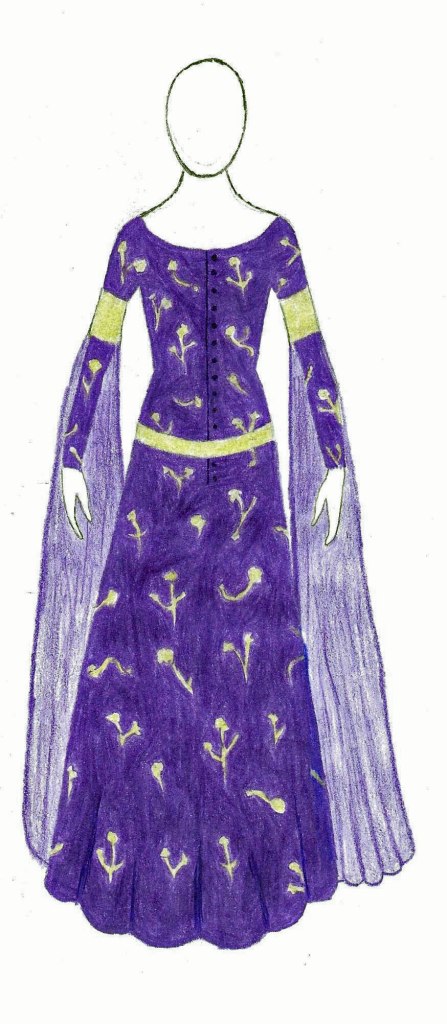
Well it’s finally done!

This gown is a 14th century cote-hardie with tippets. Although the meaning of the term sometimes varied by region, a cote-hardie was generally a fitted garment that closed with either buttons or lacing. In the sketch I originally had the dress close with buttons, but changed it to spiral lacing. Tippets are long, narrow pieces of cloth that hang from the sleeves (the long sheer pieces hanging from the sleeves of my gown). Most tippets you see in medieval images are made of thin strips of white material, usually made of linen or fur lined.
Here are some examples of cote-hardies with the usual white tippets:


The tippets on my gown are a bit unconventional, being that they are purple chiffon, but here’s an interesting example of colored sheer sleeves on a gown:

And this one with colored tippets:
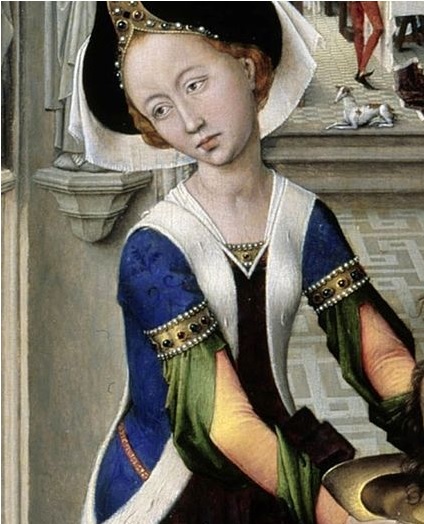
The Construction
As for the construction of the gown, I decided to go with the general pattern of the Greenland gowns, garments that were found during archeological digs in Greenland dating from the 14th to 15th centuries. These gowns were made from triangular and rectangular pieces of cloth with some curving to fit the body. In the medieval period, cloth would be cut in such a way as to waste as little fabric as possible. My gown generally follows the same pattern as seen in the below right illustration, but I added side gores as well.
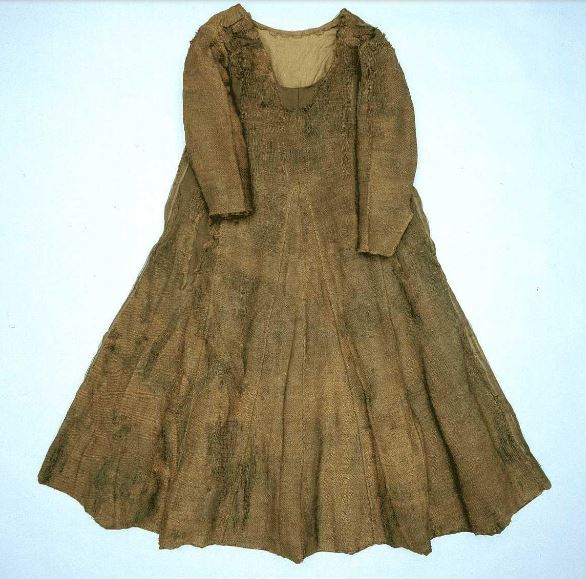

There is also some debate over whether princess seams would have been used in the middle ages. For those of you who don’t know, princess seams are when the bodice of a gown has a seam that runs from the shoulder or armpit and over the bust point so as to accommodate the curves of the body. Most costume historians will argue that princess seams did not appear until the Victorian period, but there are some people that will point to this painting of the Madonna and child as rare evidence of princess seams in the medieval period:

I decided to sort of go 50/50 with my gown’s construction in terms of princess seams. I curved the seams of the bodice a bit more than what is seen on the Greenland gowns. I made them accommodate the bust, but still tried to not make them actual princess seams by having them miss the bust point. I also got the idea for the hidden spiral lacing to close the garment from the above image.


The Material
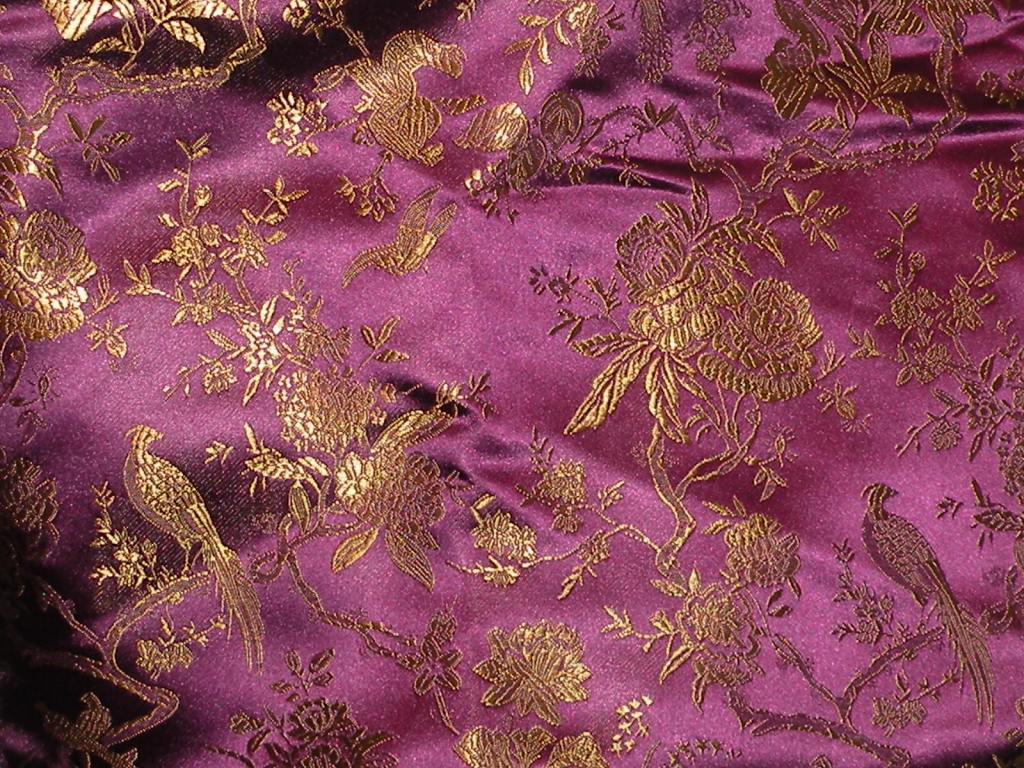
The material of the gown is jacquard and at first glance the pattern may appear a bit too modern or East Asian for medieval Europe. However, fabrics were being brought to Europe from Asia in the middle ages and I found some examples of fabrics that make mine appear passable (or so I like to think!). Here’s some wool from Central Asia from either the 5th or 6th century:
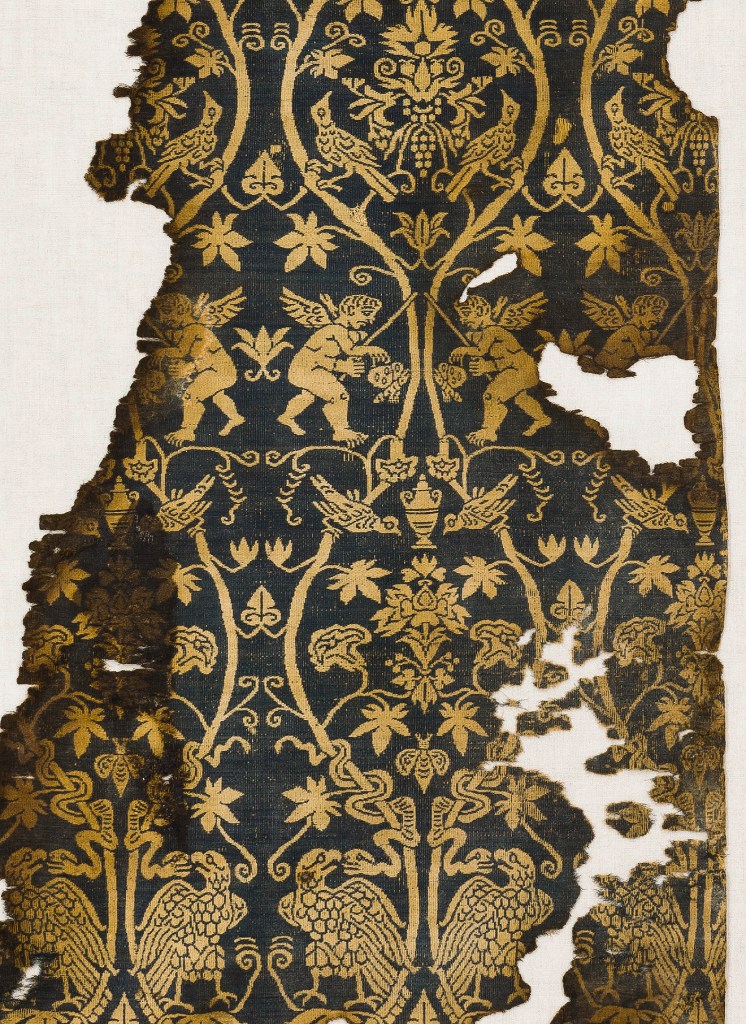
And here are some Italian silks from the 1300s that have similar motifs to the fabric of my gown:
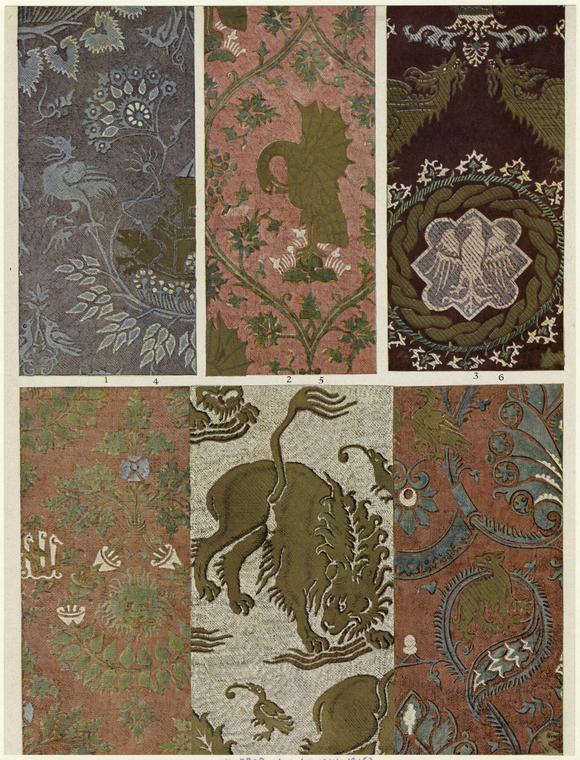
The Trim

I had a hard time finding the right gold trim. I wanted something a bit fancier, but was afraid the trim I choose with the zig-zag pattern wouldn’t be correct for the time period. But then I found this:

As you can see the trim on this dress has a similar zig-zag pattern as on mine. Sure it’s a century late, but hey, why not?
The Finished Costume


Here’s the gown with a purple velvet mantle worn over it. A mantle was a type of cloak, usually worn by those of higher social rank.



And here I am wearing a veil to cover my super inaccurate hairstyle. Veils would have been worn by adult women. Mine has more ornamentation than was common however.

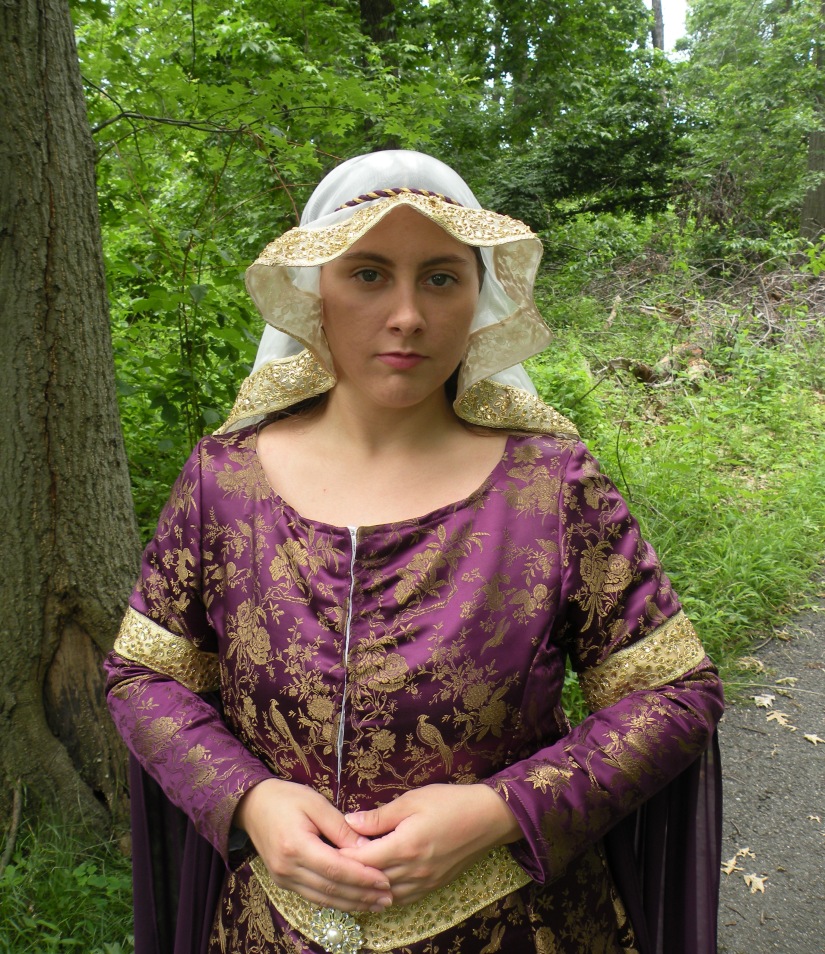
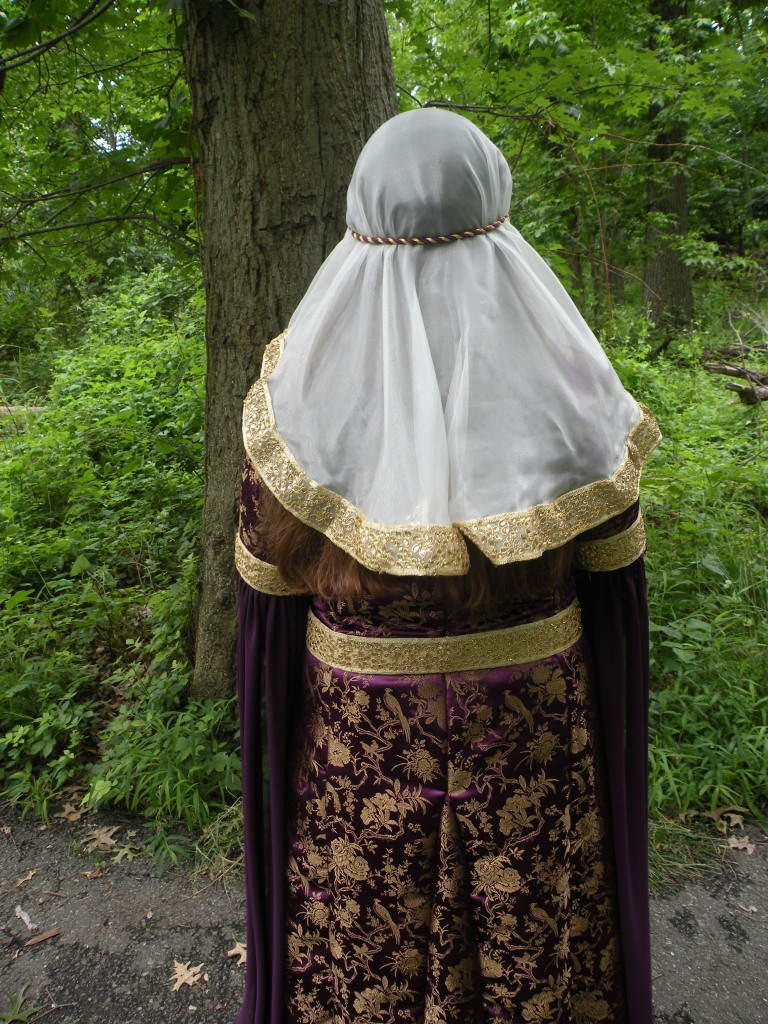
Sources:
- Survey of Historic Costume by Phyllis G. Tortora and Keith Eubank
- Fashion: The Definitive History of Costume and Style from the Smithsonian


I love want to wear for Halloween!
LikeLiked by 1 person